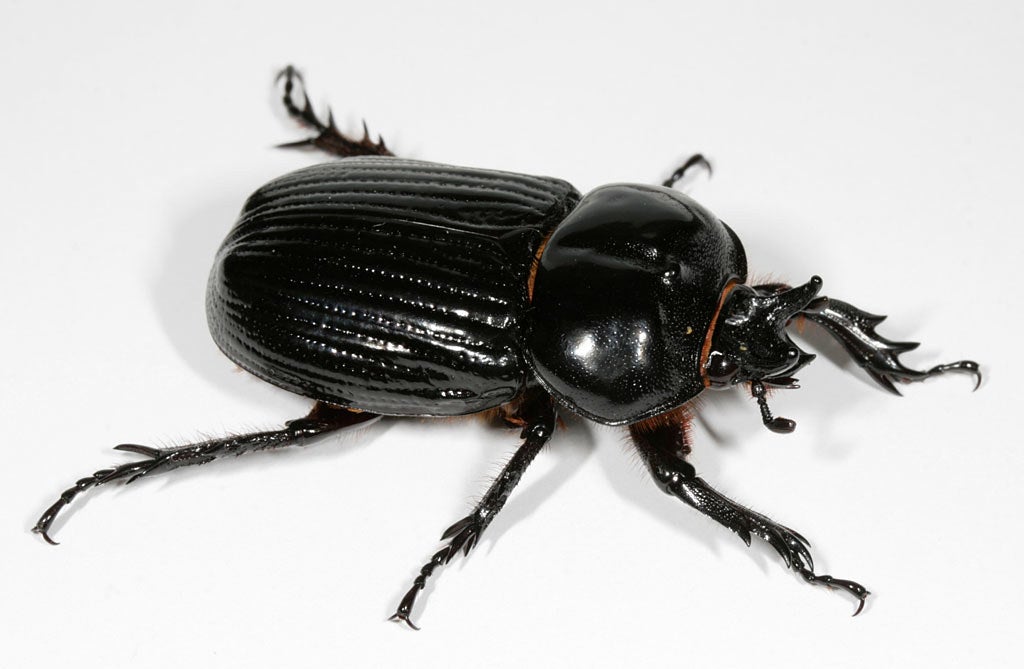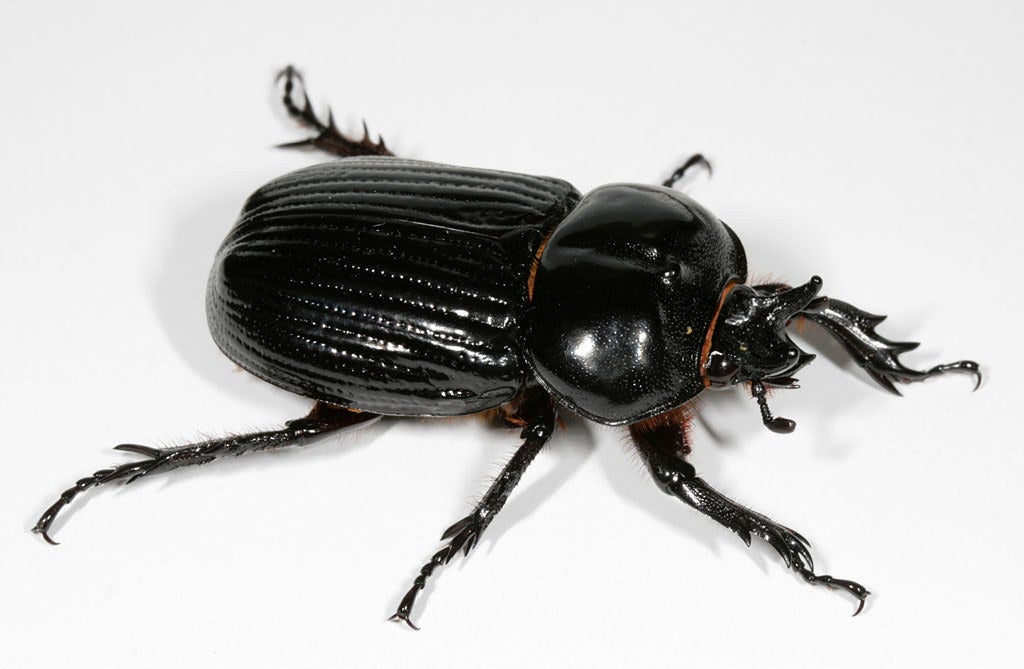Polk County’s Most Wanted – Animal!
Published 2:53 pm Tuesday, December 21, 2021
|
Getting your Trinity Audio player ready...
|
Conserving Carolina and botanist/ecologist David Campbell need your help in locating this month’s “Polk County’s Most Wanted—Animal,” the Triceratops Beetle (Phileurus truncates). Polk County’s Most Wanted is a community science initiative with a new challenge each month, in which you can expand the scientific understanding of the flora and fauna of Polk County.
Triceratops beetles belong to a large group of beetles known as scarab beetles. Their name is derived from the three projections found on their head. They have two black horns that extend from above their large eyes and the top of the jaw curls upward to a point. These three projections resemble those seen on a triceratops fossil.
The body length ranges from 1 to 1.5 inches, making Triceratops beetles one of our largest beetle species. The entire body is glossy and covered with small dimples or depressions. Short orange-brown hairs can be seen along the sides of the body and the head.
Triceratops beetles are woodland beetles. Larvae feed on decaying wood, especially oak. Adults are predatory and feed on the larvae of other wood-inhabiting insects, especially grubs from other types of beetles.
These beetles occur from Virginia south to Florida and west to Tennessee and southeastern Arizona and into Central America. They are commonly seen from late spring to early autumn around areas of decaying wood. In our area Triceratops beetles can be spotted on warm days late into the year.
If you think that you have seen a Triceratops Beetle in Polk County, please contact Pam Torlina at pam@conservingcarolina.org and, if possible, provide a clear image for evaluation.
Visit Conserving Carolina’s website, conservingcarolina.org/polk-most-wanted, for more information about “Polk County’s Most Wanted” and to download and print a “Pocket Guide” with all of the “Most Wanted” plants, animals, and habitats that you can be on the lookout for!
Also, a culmination of David Campbell’s seven years in the field documenting the rare and significant flora and fauna in Polk County have been compiled in a book titled, “An Inventory of the Significant Natural Areas of Polk County, North Carolina.” The document can be downloaded for free on Conserving Carolina’s website at conservingcarolina.org/polk-county-inventory, or a hard copy can be purchased, at cost, on Amazon.
Conserving Carolina, your local land trust, works to protect, restore, and inspire appreciation of nature. Learn more and become a member at conservingcarolina.org.
Submitted by Pam Torlina 






